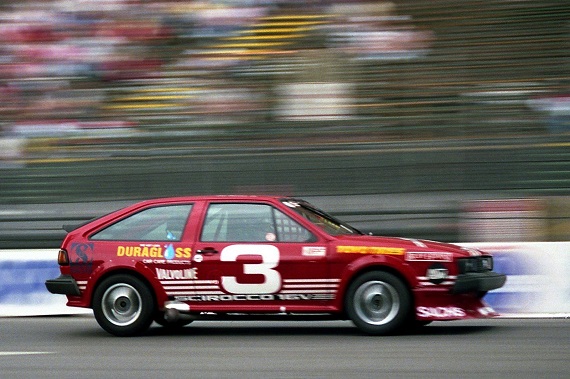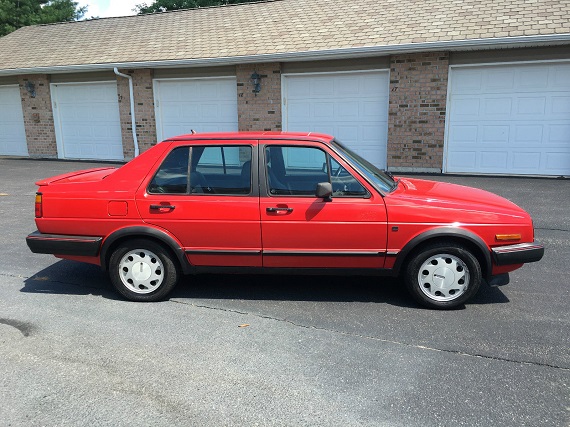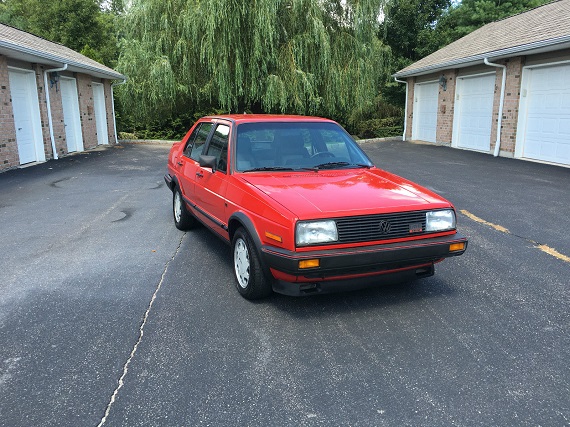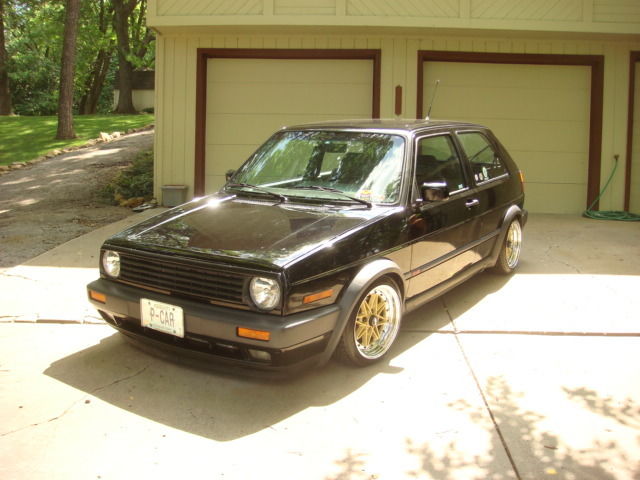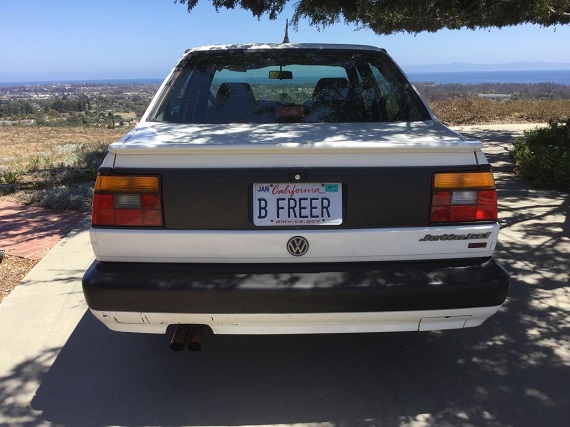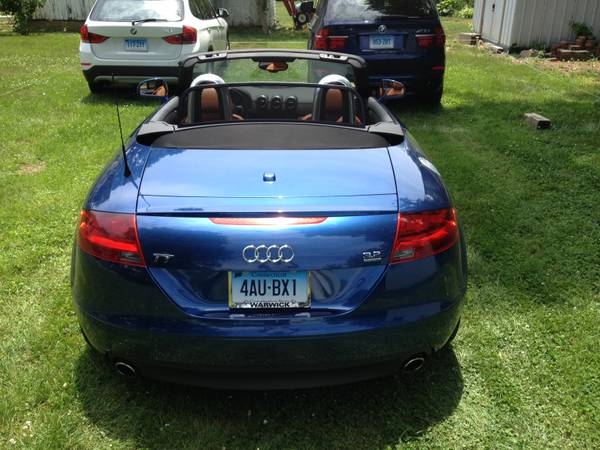Motorsports Monday has become a bit predictable. First, I am apparently the only one interested in it. Second, it probably involves a Porsche or BMW. And lastly, that means that it boils down to generally two models – the 911 or M3. Yet every week I still type “Race Car” into the search function of eBay, resilient in the belief that eventually something new will pop up. Every once in a while I’m rewarded with a GTi or very rarely an Audi that has been set up for track duty, but today’s feature is a pretty unique beast. Apparently raced since new, this Volkswagen Scirocco 16V was constructed to compete in IMSA. Normally the domain of Group C/GTP prototypes in the 1980s, IMSA had support series such as International Sedan (IS) and Radial Sedan (RS) race series, later to become the popular Showroom Stock class populated by more domesticated beasts you generally would see on the road:
Tag: Mk.2
As I talked about in a post last April, the 1987 Volkswagen GLi 16V had some unique trim features. 1987 was the sole year in the U.S. that you could buy both a 16V and 8V GLi. Upgrading to the DOHC motor got you a rear spoiler and deeper front spoiler with integrated brake ducts. Though they were the same 14″x6″ size of the 8V model, 16Vs got the signature “Teardrop” alloys (though their actual name is Silverstones). Inside you got some awesome Recaro seats in place of the normal sport seats, and the more luxurious GLi models had many power features available. Both 1987 models retained the earlier split front door window design and narrow door trim as well as the 7-bar grill, but the 16V GLi also got a roof-mounted Fuba antenna. That particular 1987 I looked at in April was in awesome condition with near 140,000 for, so this one should be spectacular with 90,000 miles less:
CLICK FOR DETAILS: 1987 Volkswagen Jetta GLi 16V on eBay
3 CommentsOn a recent visit to Coventry Motorcar I was shown the “Tuning Drawer”: one pull-out drawer in an admittedly large and cool rolling tool chest full of cords, plugs, and modules. Today, that’s what it takes to tune a car; not cams, throttle bodies, head work or a high pressure fuel pump. Designing those parts to fit into modern motors and still have them leap through the hoops of getting certified by the EPA means that only the richest and most respected tuning firms can produce parts to fit into these complicated motors, and even then they’re more often than not highly reliant upon computer reprograming rather than internal rebuilds. Today’s GTi may not look particularly outrageous from the outside, but it brings us back to a more simple time in tuning, an analogue age where jumps in horsepower were measured in single digits, not in groups of 100 or more:
CLICK FOR DETAILS: 1992 Volkswagen GTi 16V on eBay
2 CommentsEdit 6/17/2017: This car has reappeared with new photos, a new listing and a $10,000 Buy It Now HERE!
The late 1980s saw an explosion of popularity in homologated race specials. There was the Quattro, fresh off the World Rally Championship. Though technically not a homologation, Porsche gave us a pretty popular option in the 944 Turbo which derived much of its technology from the successful 924 Carrera GTR/LM program. Of course, the real heavy hitters were the 190E 2.3/2.5-16 Cosworths from Mercedes-Benz and the superstar BMW M3. But all of those cars were pretty expensive; the Quattro and 944 Turbo were the best part of $40,000, the Benz hit the market at $37,000 while the slightly more affordable M3 stickered for $34,000. Still, inflation corrected, even the least expensive 1988 M3’s sticker price would equate to roughly $69,000 in buying power today – hardly affordable to most.
However, for a little less than half of what the M3 cost, you could get a fair chunk of the high-revving European feel in the Jetta GLi. It hit the markets around $15,000, which felt like quite a lot considering a base Jetta cost only half that amount a few years early. But a lot of Jetta you got for that money. Like the M3, it had a deep front spoiler with integral brake ducting and a rear wing. It had a roof mounted antenna, too, and most Jetta GLis were full of power options like windows, mirrors, anti-lock brakes and sunroofs. Also like the M3 you got form-fitting Recaro seats, and light alloy BBS wheels. And at its heart was a high-revving double-overhead cam 16 valve motor hooked to a close ratio 5-speed manual gearbox. Of course, for $20,000 less than the M3, you weren’t going to get a BMW – power, material and build quality, and the performance were all less than the Munich cars or the rest of that group previously mentioned. But impressive was the Jetta nonetheless, and the late run 16V GLis are still heavily appreciated today:
CLICK FOR DETAILS: 1992 Volkswagen Jetta GLi 16V on eBay
3 CommentsVAG’s decisions on who would be able to shift their own gears have always been a bit confusing, but the period of the 3.2 VR6 is really where this came to a head for U.S. customers. In 2004, Volkswagen brought their hottest Golf (finally!) to our market, featuring the singing VR6 in 6-speed manual only form with the R32. Great, but Audi offered the same platform in slinkier TT 3.2 Quattro form. However, fans of manual shifting were overlooked as Audi opted to bring the top TT here only with DSG. This carried over to the A3 model range, where you could get a 3.2 quattro but only with the DSG box. When it came to the next generation, VAG opted to change this formula. As it had been a fan favorite, you’d assume that the R32 would retain the same layout. But no, Volkswagen removed the manual option and the Mk.5 based R32 became DSG-only. So that would hold true in the bigger budget, typically more tech-heavy TT too, right? Wrong, as in the 2nd generation, Audi finally opted to allow buyers to select a manual in either Coupe or Roadster form:

